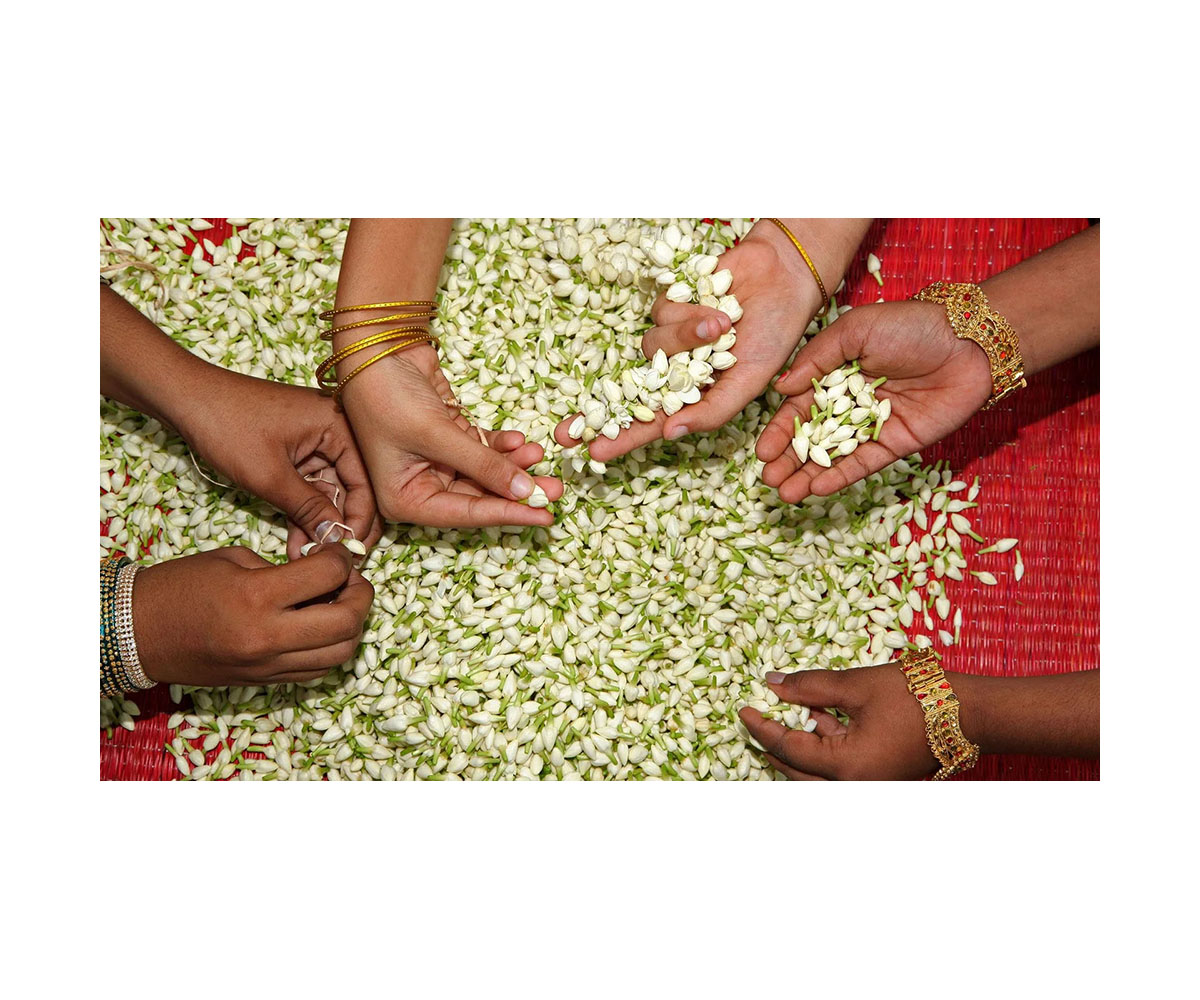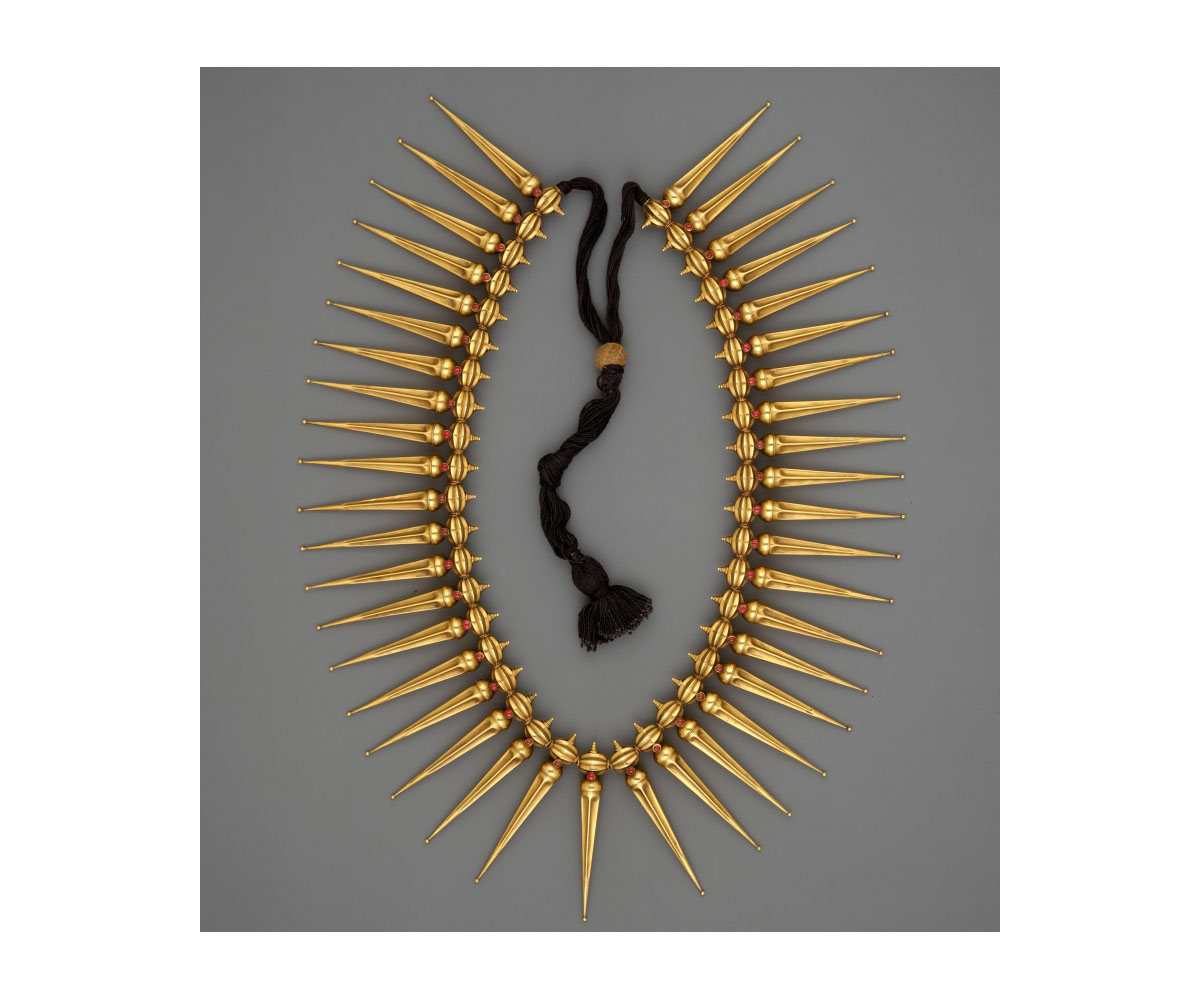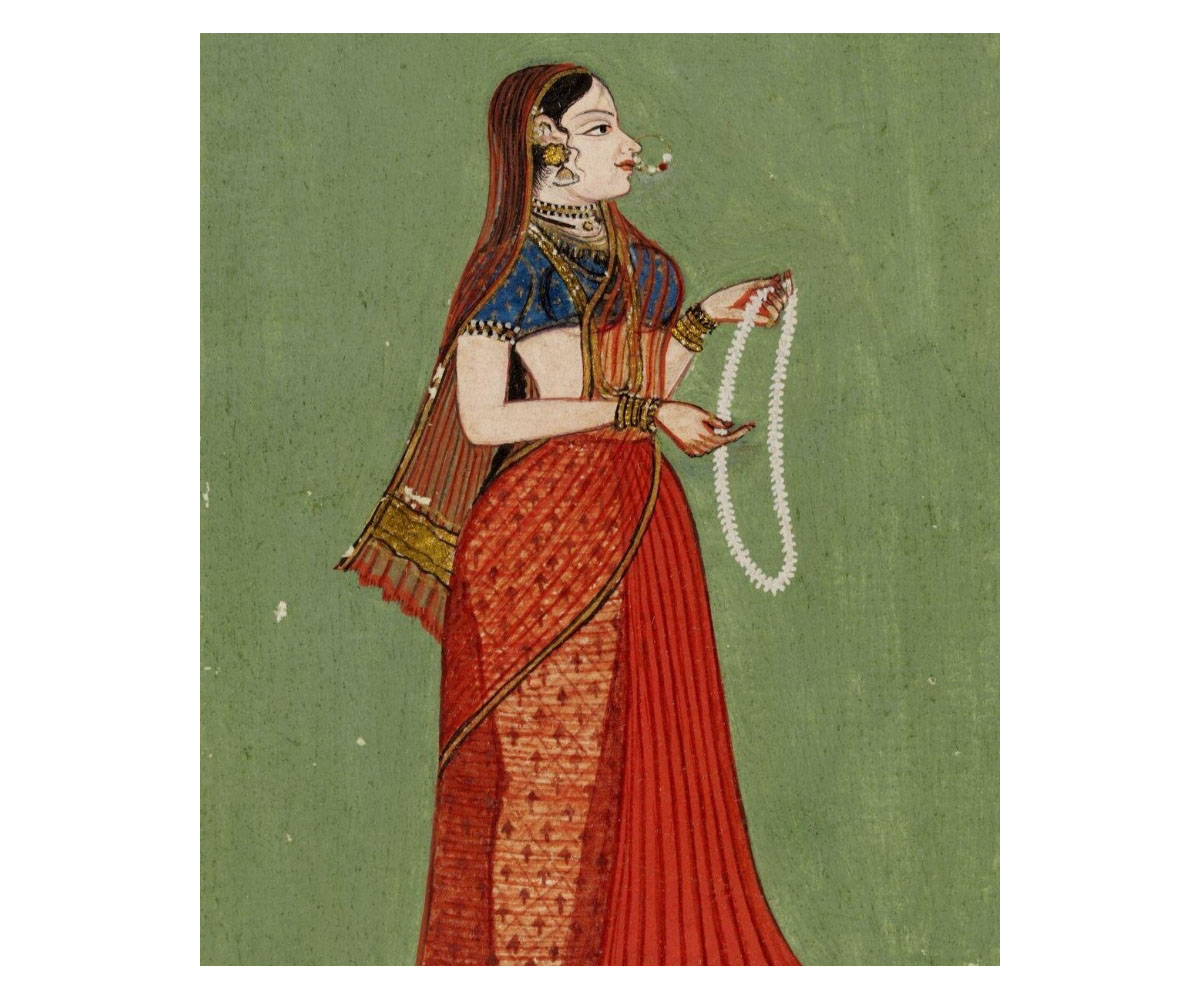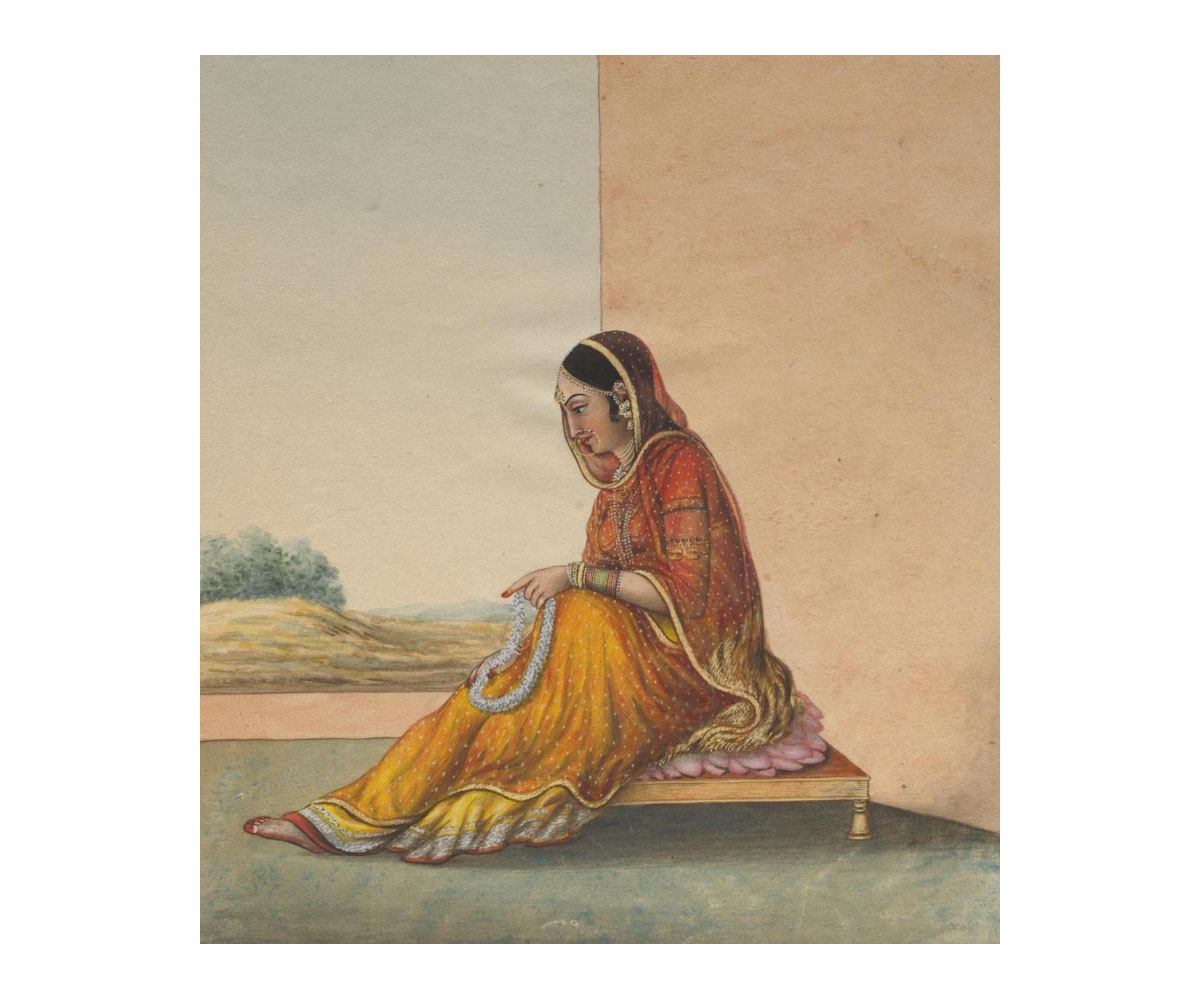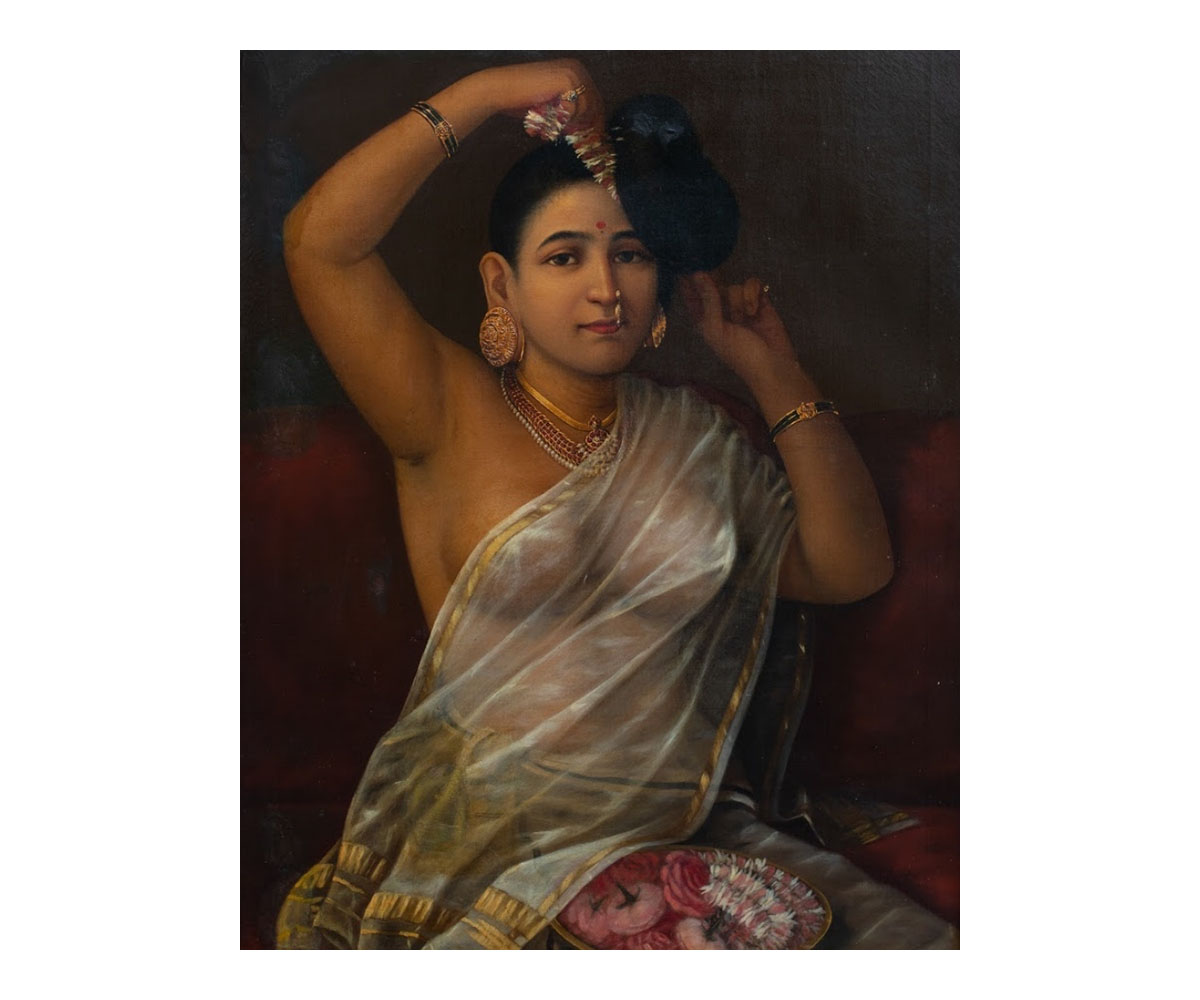PERSPECTIVES
Worship, Beauty and Fragrance: The Many Lives of the Jasmine Flower
The ubiquitous jasmine flower was and continues to be used in significant and varied ways across South Asia. During festivals, women make auspicious garlands out of these flowers, decorate their hair with them and also offer them to deities. South Asian paintings are replete with images of the gleaming white flower, idols of gods are decorated with blooming garlands and wedding halls are decked in these fragrant blossoms. Jewellery and textiles from the subcontinent often feature the jasmine bloom and bud as a beloved motif. Steeped in myths and folklore, as integral to spirituality as it is to communal celebrations, the jasmine flower enfolds diverse histories of South Asian socio-cultural life.
The word jasmine comes from the Arabic word yasmin, which translates to “gift from God,” and the Persian yasmine, which means fragrance. The varied types of the flower have unique local names — Malliki, Jai, Tagar, Mogra, Moti, Chameli, Juhi, Kund — and when they are in full bloom in spring, the surroundings are enlivened by their sweet smell and pristine appearance. Because of its pervasive and enduring fragrance, jasmine is also associated with Kama, the god of love and erotics, and is thought to possess aphrodisiac qualities. It is believed that jasmine is one of the five flowers that make up Kama’s arrows of love. While mentions of jasmine date as far back as the Vedic era, its cultivation developed around the city of Madurai from the fifth century BC onwards. The specific variant, locally known as Madurai malligai, with its waxy, white, oblong flowers that are much more fragrant than other varieties, has even received the Geographical Indication (GI) tag from the Indian government.
The fragrance of jasmine found its way into perfume distilleries as early as the Indus Valley civilisation; archaeologists have excavated distillation stills from its ruins. The traditional attar of jasmine oils, sandalwood and rose water, believed to have been a royal favourite, has been produced in Kannauj, Uttar Pradesh, a place historically known for its fragrances. The flowers are usually harvested early in the morning and distilled immediately to retain their freshness and manage their aromatic profile, which veers from floral in the morning to fruitier in the evening. As the flowers are very delicate and fragile, the perfume-making process demands great dexterity, nuance and finesse.
Unsurprisingly, when luxury perfume chemists looked to devise new formulas, they turned to two varieties of jasmine — sambac and grandiflorum. From Gucci, Bulgari and Versace to Chanel, most luxury brands have jasmine-derived perfumes and oils in their repertoire. Chanel is reported to have bought land in Grasse in France, to safeguard and ensure jasmine harvests. Jean Patou’s “costliest perfume in the world”, Joy, reportedly contains around 11,000 jasmine flowers per ounce.
This much admired, coveted and well-travelled flower, blooming and ready for the taking nearly all year round, has a versatility that ensures that it has been used over the years in a range of contexts, from perfuming the bath water of ancient royals to creating an auspicious environment for worship and adding fragrance to tea.




